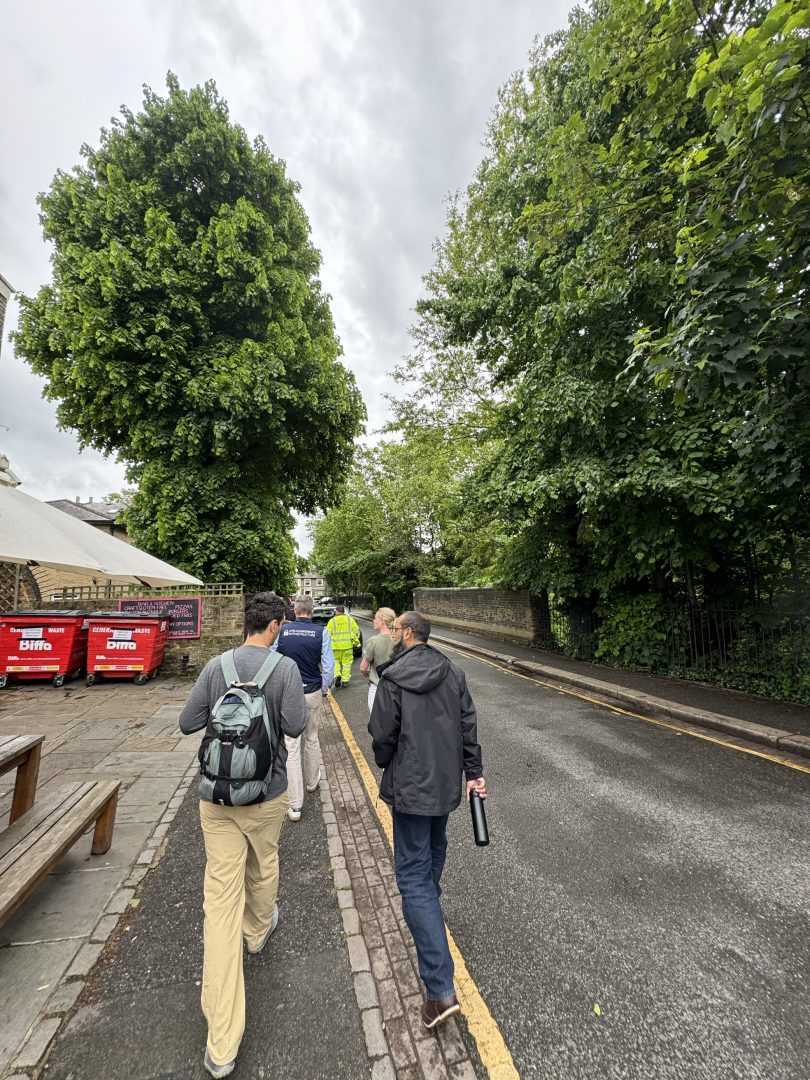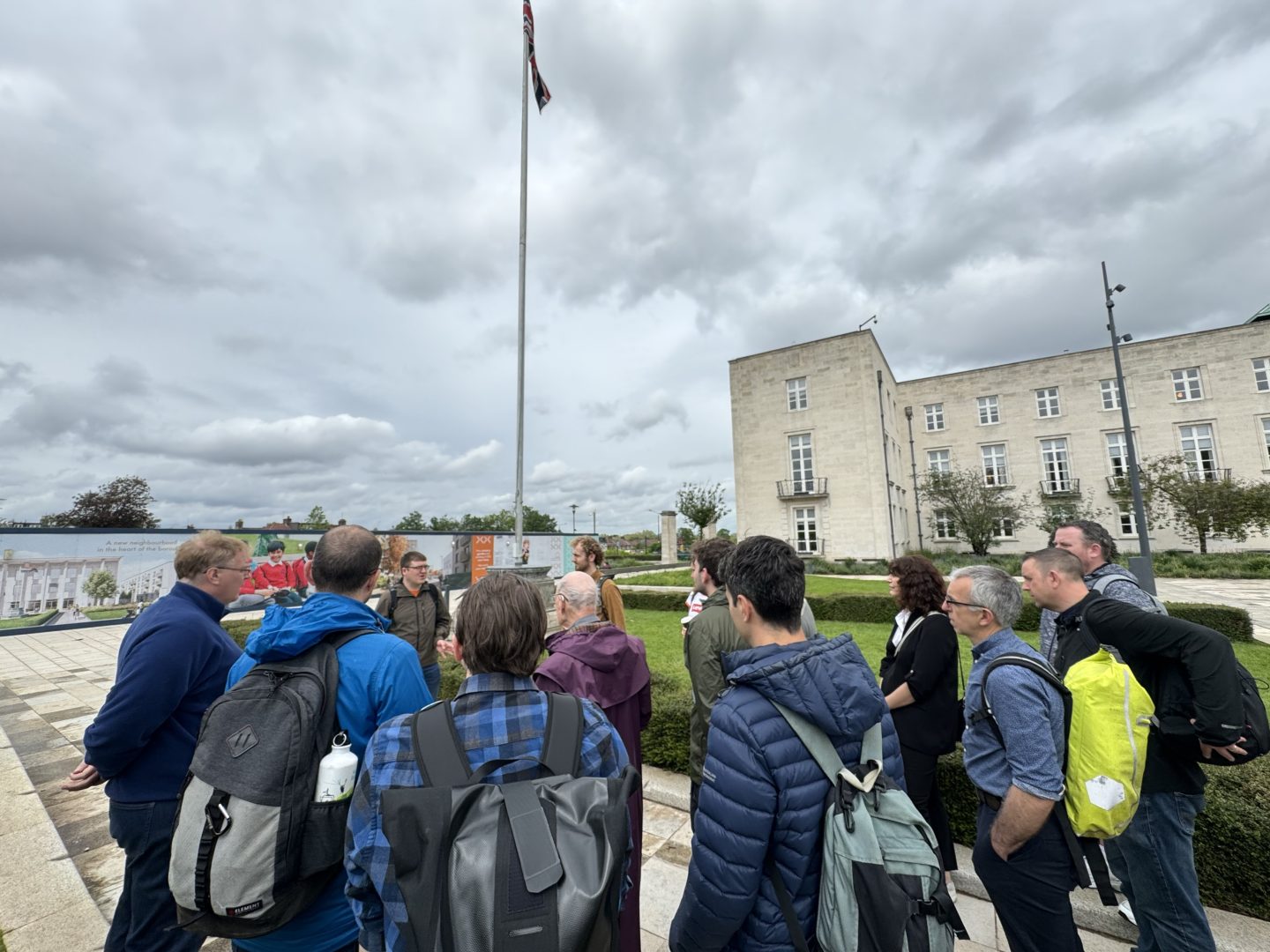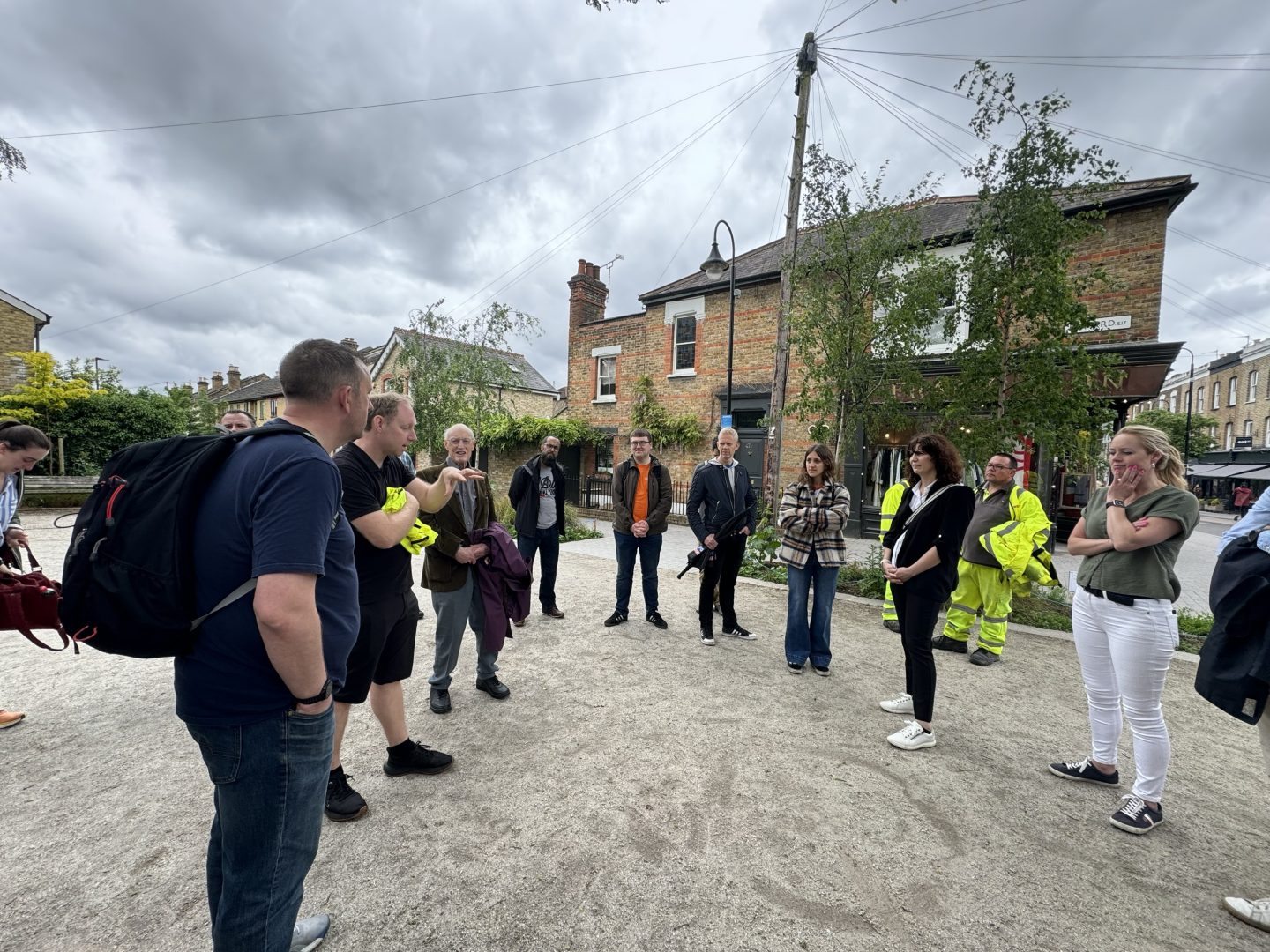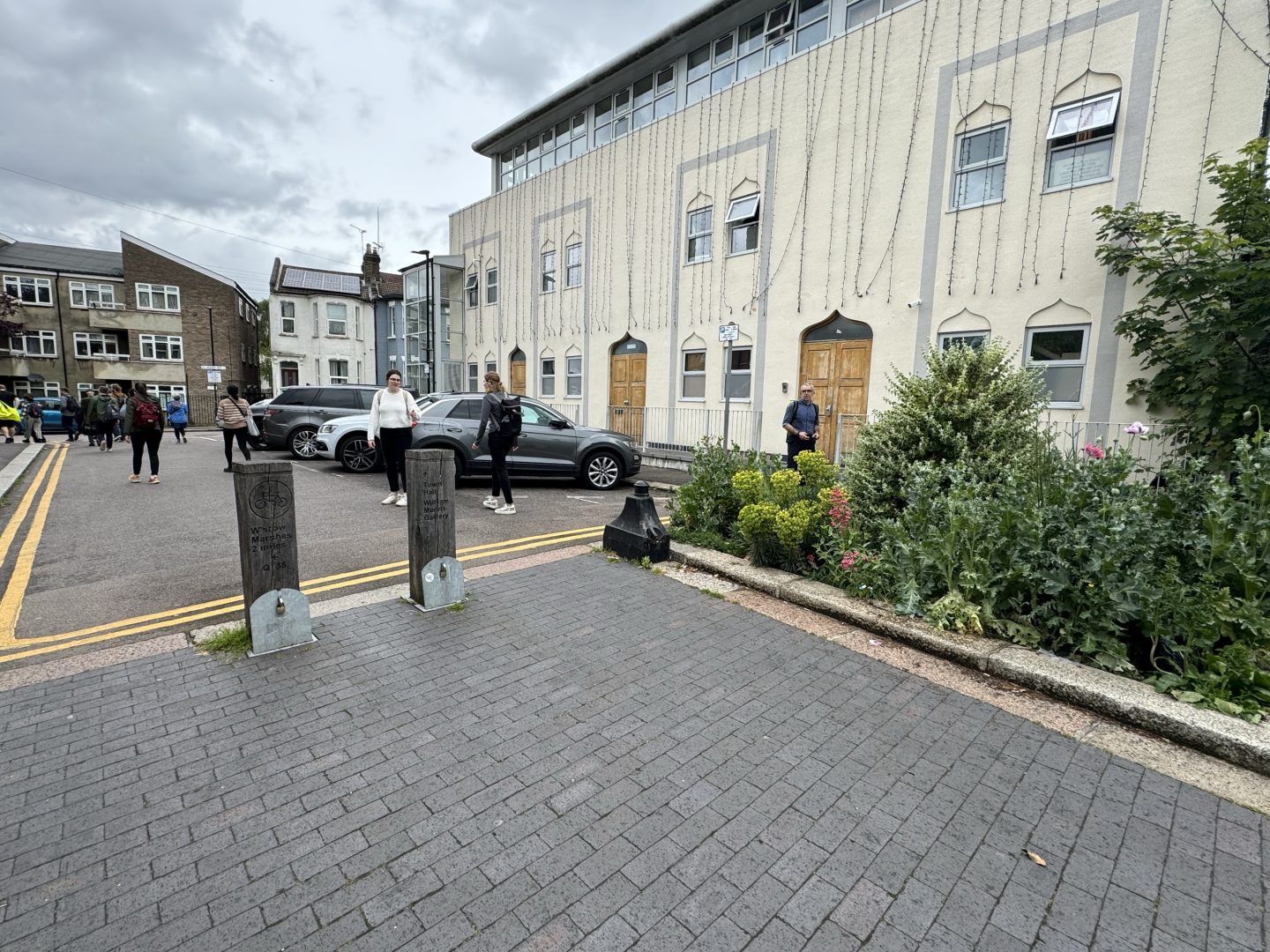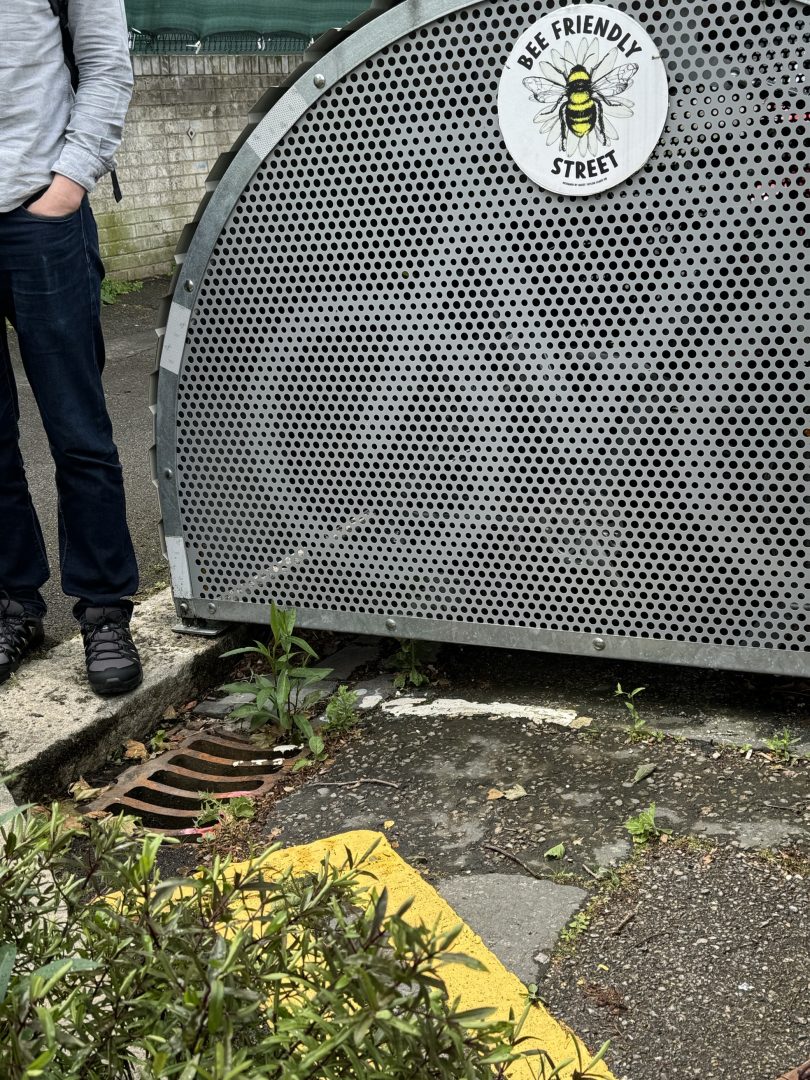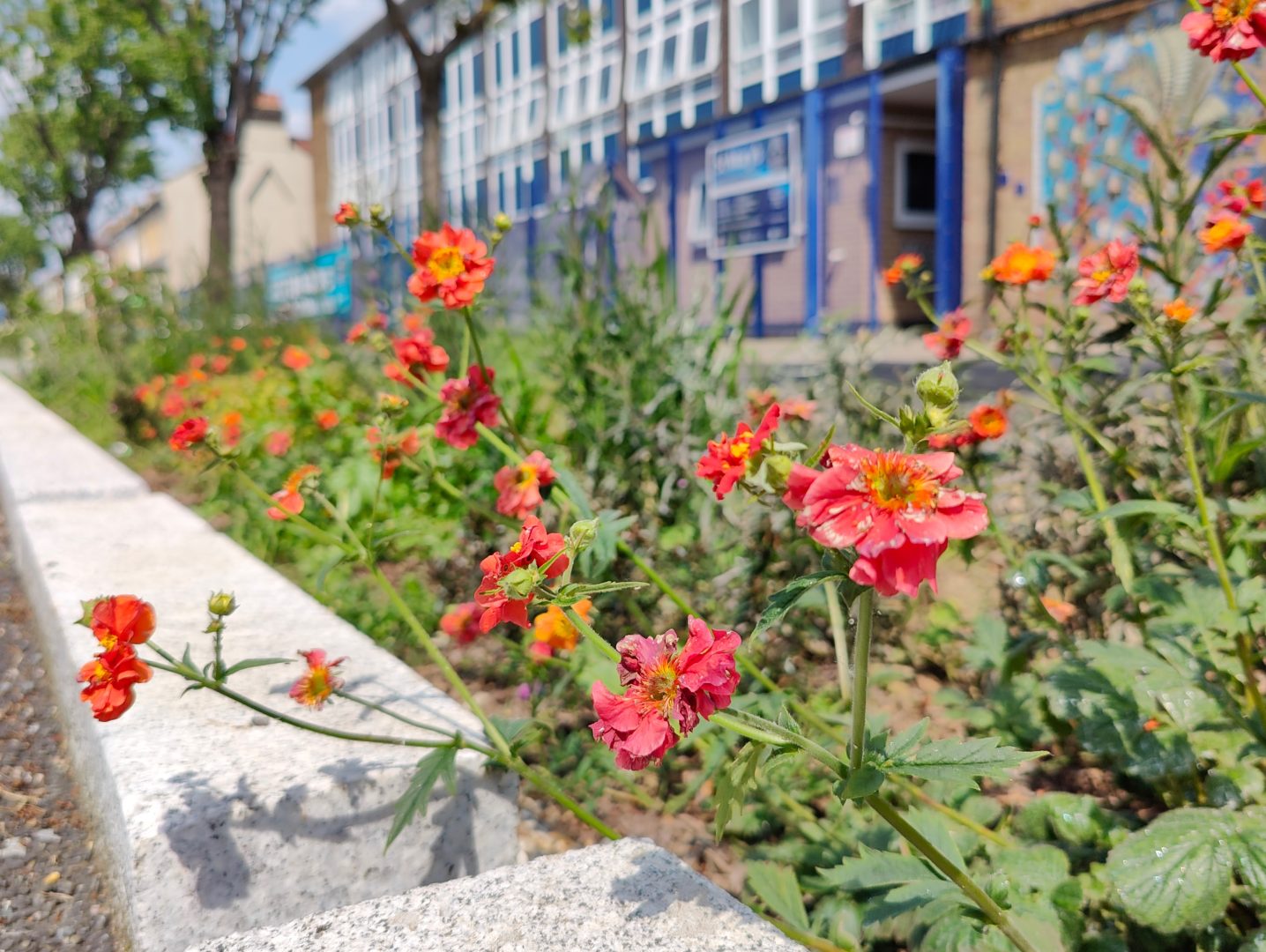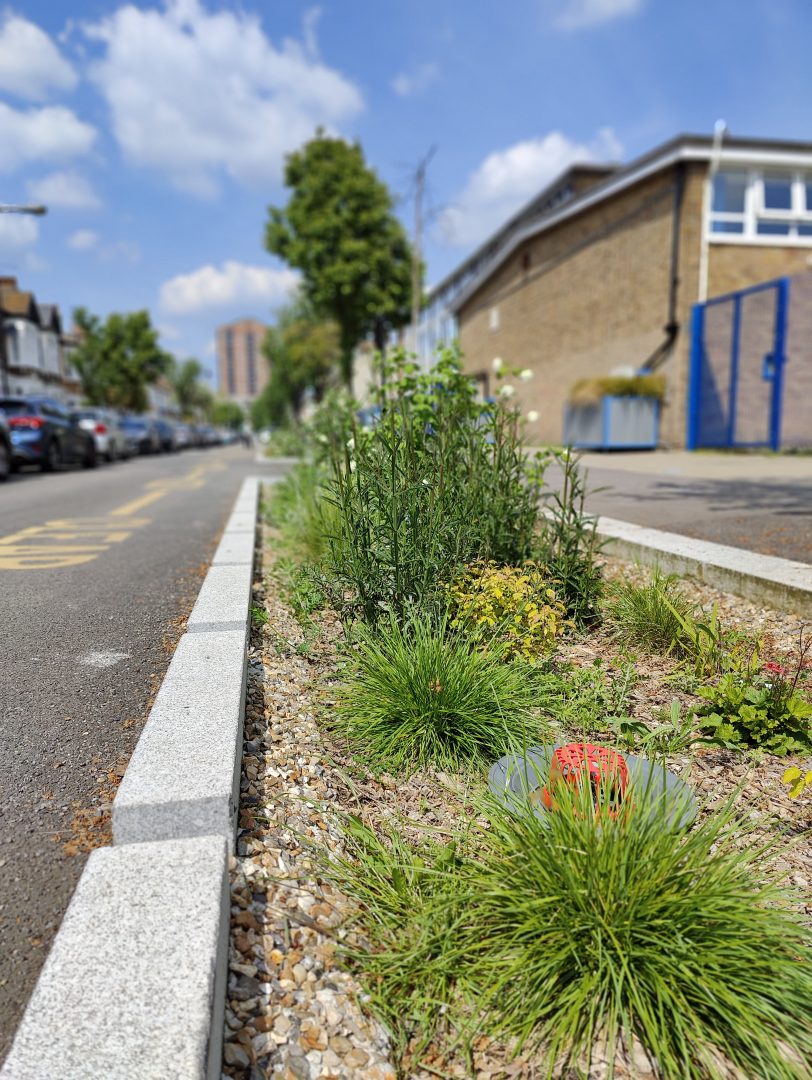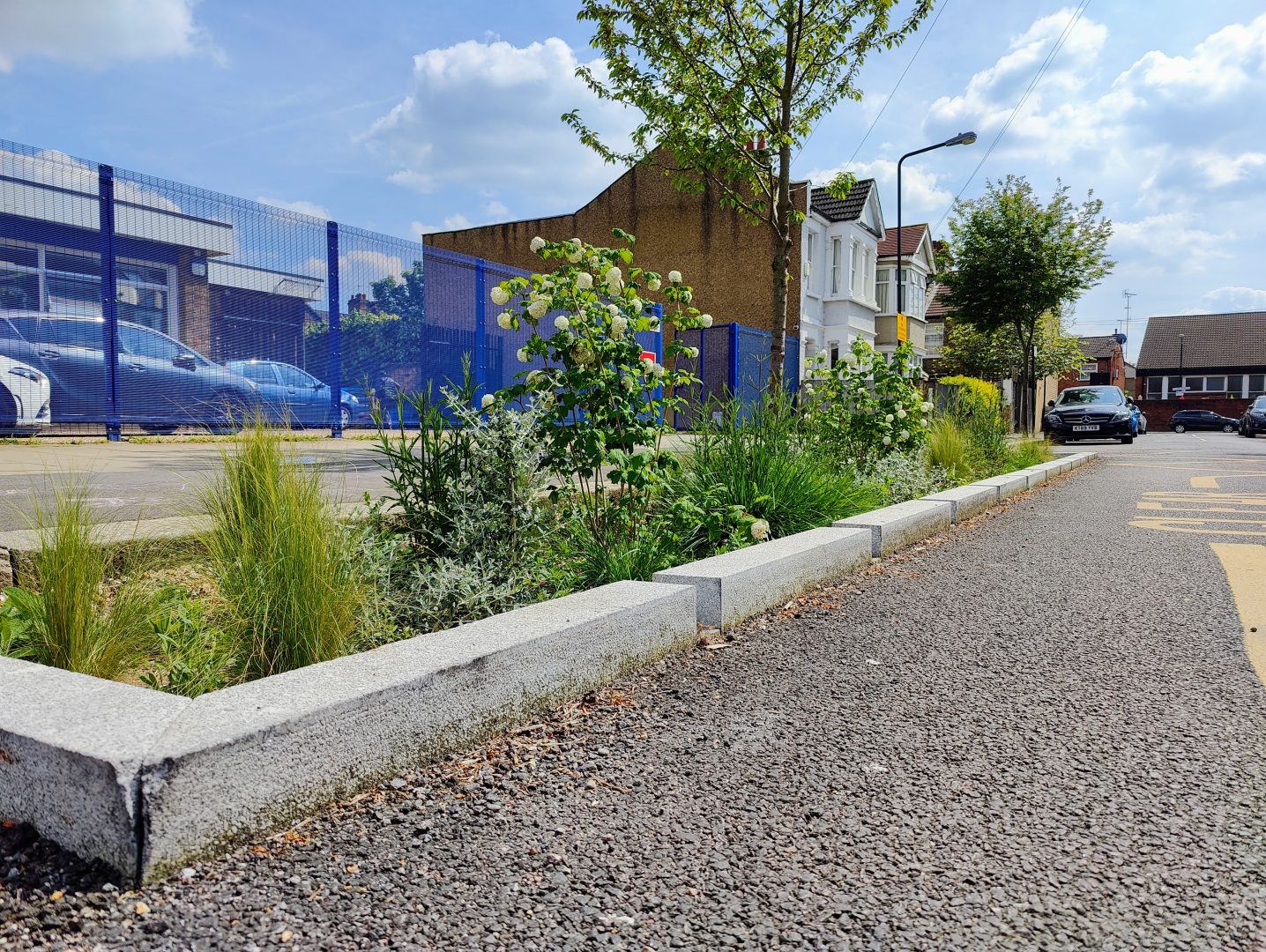We celebrated the ten-year anniversary of Enjoy Waltham Forest with a two-day event in London, featuring consultants, project managers and other stakeholders who contributed to the successful delivery of the innovative mini-Holland scheme.
The project pioneered a new way of sustainable travel in London, serving as a unique learning experience and setting standards for many other active travel schemes across the UK.
The “Ten Years of Enjoy Waltham Forest” Conference highlighted how the Council, in collaboration with Project Centre, Riney, and other stakeholders, conceptualised and developed the Enjoy Waltham Forest Programme, from stakeholder engagement to implementation, behaviour change and monitoring.
Day one – the walking and cycling tours
Project Centre’s team, including our Regional Director, Chris Harrison, and our Strategic Account Director, Vala Valavan, who were key project managers during the mini-Holland scheme, joined and helped guide the tours. Under Vala’s leadership, Waltham Forest successfully bid for £27m of ‘Mini-Holland’ funding from Transport for London and delivered the groundbreaking Enjoy Waltham Forest Programme.
These routes followed some of the walking and cycling routes implemented as part of the scheme. We stopped at a few key points to discuss some design elements, such as the sustainable cycling infrastructure and cycle parking, public realm improvements, School Streets and Sustainable Drainage Systems.
Cycling infrastructure and cycle hubs
Designing and implementing sustainable cycling infrastructure was a key element of the mini-Holland scheme. Some of the challenges to these included addressing the client’s and the community’s concerns around worsening traffic congestion and reducing available parking spaces.
Designers and engineers had to find the best way to provide cycling infrastructure without sacrificing most of the available street and parking space. The introduction of measures such as the moveable bollards was crucial, as it allowed residents to still drive and park in the area.
The Council implemented 11 cycle hubs and 763 bike hanger, providing safe storage for bikes. They also provided cycle training for over 22,000 residents and and pop-up mechanics services free of charge for over 10,000 bikes.
“The number of residents cycling and walking in the area has significantly increased over the past ten years. We have a few residents on the waiting list to store their bikes in our secure cycle hubs and hangars and we’re currently working with partners and stakeholders to accommodate all requests. We are impressed with the continuous uptake of cycling facilities across the area, also made possible by the introduction of tailored complementary measures. All these sustainable measures are benefiting both the environment and the community, with recent studies showing how residents’ lives have been prolonged by over six weeks.” – The London Borough of Waltham Forest
Public realm improvements
Along with reducing traffic and encouraging residents to cycle and walk across the neighbourhoods, Project Centre and other stakeholders worked collaboratively to improve the existing public spaces, making these safer, more sustainable, and attractive for residents and visitors. During one of the walking tours, we stopped at the public space off Orford Road.
Previously, this was a T-junction reporting quite a few congestion issues and conflicts with cars going through. As part of the Mini-Holland scheme, we closed the two-way street to traffic. We also planted new trees to increase biodiversity and implemented new seating areas. All these interventions gave the space back to local residents, who took ownership of it.
“We had one of our first consultation events opposite this square. We were expecting a turn-up of around 20 people, but a quite large local opposition group showed up instead. I think engaging so early with the community and with people who were strongly against the measures helped us address their concerns and build a sense of ownership. It still shocks me to think back to these memories now and see what we created here. The community is using the previously congested spaces for socialising, as well as organising weekly market stalls and other activities. This is now the place where the community decorates and lights the Christmas tree every year.” – Project Centre’s Regional Director, Chris Harrison
Sustainable Drainage Systems (SuDS)
In 2019, some areas in Waltham Forest were affected by a bad rainfall event, causing damage to residents’ properties. The Council commissioned our engineers to address this. We designed a combination of SuDS features to maximise storage capacity in key areas across the borough, such as Brooke Road and Memorial Park. Our SuDS not only addresses flooding but also provides new planting and amenities that significantly increase biodiversity and community engagement.
School Streets
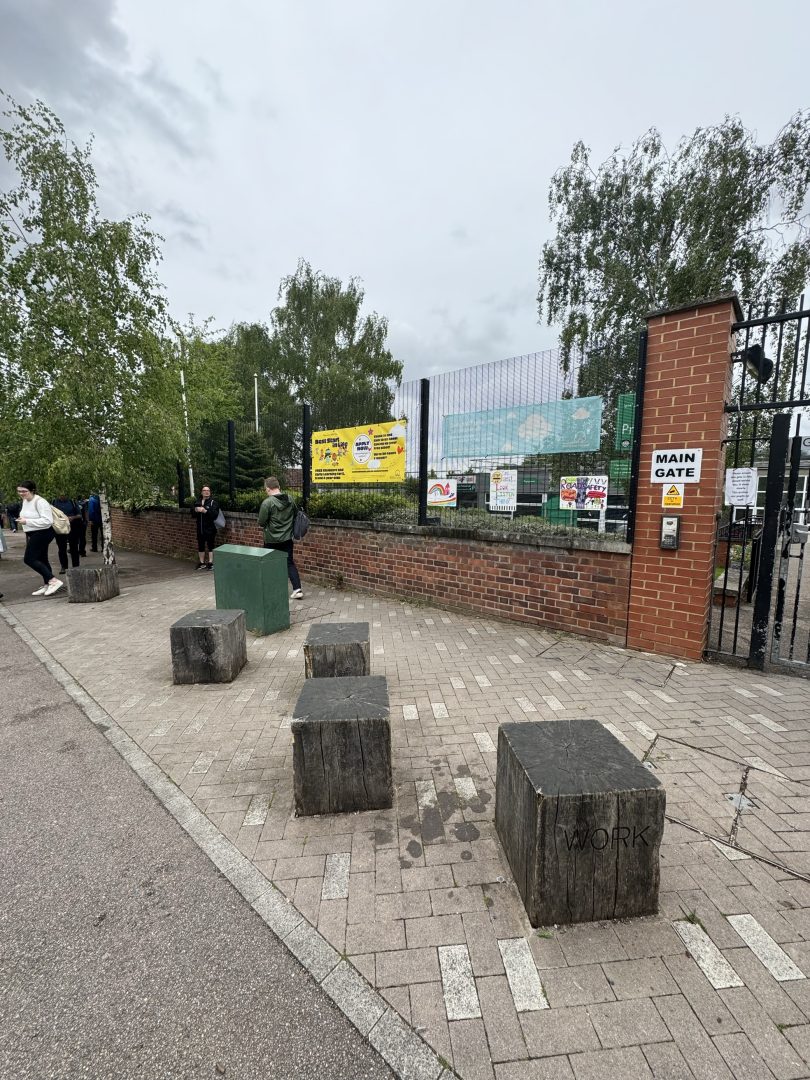
Over the last ten years, Waltham Forest implemented 22 School Streets across the borough. Also, with the implementation of cameras, the measures are effective in reducing antisocial behaviour and increasing road safety for pupils and families.
Day two – the Conference
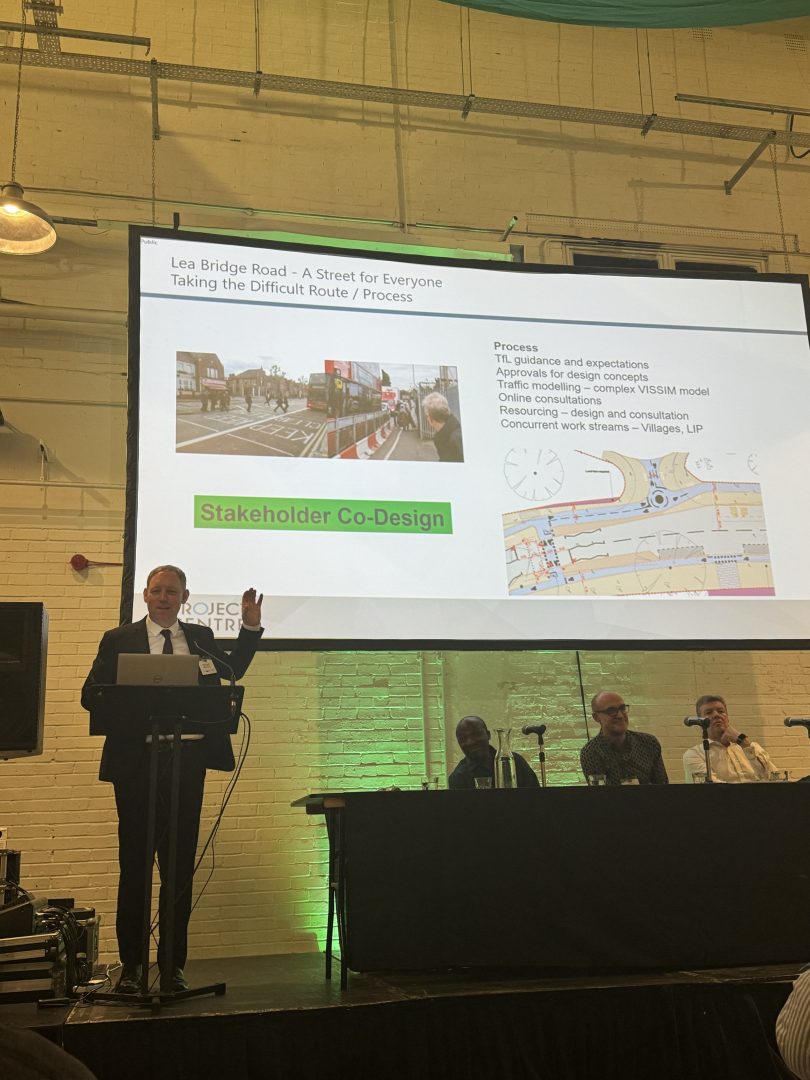
The Conference included in-depth conversations around the mini-Holland approach, what worked well and what can we learn from there. Our Strategic Account Director, Vala Valavan, was the London Borough of Waltham Forest’s Director of Highways at the time. He opened the conversation with an overview of the successful measures implemented during the scheme.
Our Regional Director, Chris Harrison, followed him on stage, speaking about how to design and deliver sustainable streets for everyone. He focused his talk on Lea Bridge Road, which was central in the Council’s bid for Mini-Holland.
The road is an important route through the borough and provides strategic links into central London. Over the last few years, Lea Bridge Road has seen a significant rise in cycling and now has the highest volume of people cycling in Waltham Forest at six per cent of all traffic in peak periods. Through mini-Holland funding, we have been able to redesign the whole length of Lea Bridge Road. This increased road safety and created a more attractive environment for everyone to cycle. During the design phase, we encountered a few challenges which are summarised below:

Some of the key measures to overcome these challenges included:
- Segregated, continuous cycle tracks
- Improved road crossings
- Upgraded bus stops
- Redistributed parking and loading
- Road closures with modal filters
- Increasing trees and street greening
- Blended crossings at side roads
- New and Improved public spaces
- Upgraded junctions and traffic signs

The importance of traffic modelling
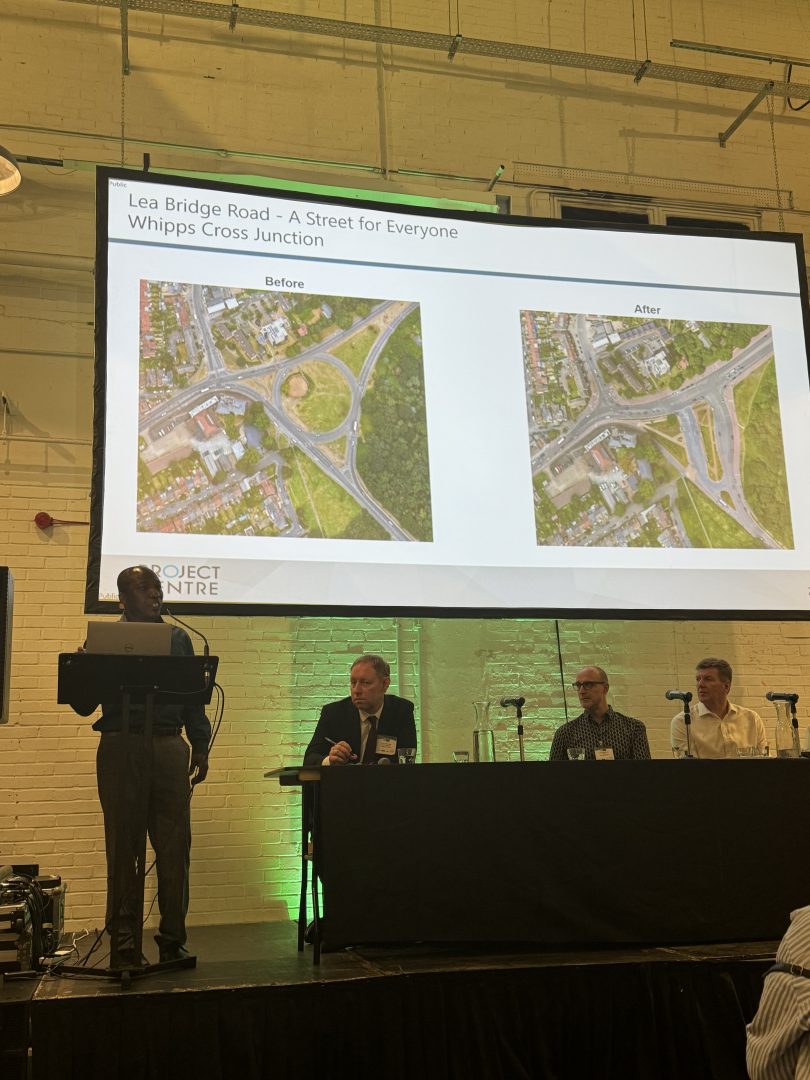
Before the detailed design phase, Project Centre’s team provided traffic modelling visualisations, helping clients and the community to understand the impact of proposed measures on general traffic. The modelling also allowed us to propose suitable mitigation measures.
Our expert team used two VISSIM models in two sections to simplify the process. The modelling results reassured the clients and residents that the design wouldn’t cause delays to general traffic or public transport. Quite the opposite, the modelling reported a decrease in total journey times of an average of 91 seconds for cars and 63 seconds for buses.

Behaviour change is key to driving real change
One of the reoccurring themes in our conversations at the event was the importance of involving the community. This wasn’t a popular approach back then, now it’s well-valued and considered across organisations.
Our Head of Communications and Engagement, Steph Bortoli, attended the Conference, facilitating a conversation between Cllr Clyde Loakes, Deputy Leader at London Borough of Waltham Forest, and Will Norman, Active Travel Commissioner at Transport for London.
Engaging the community early, addressing their concerns and providing sustainable solutions helped us shape the project and was key to its success.
Also, after its implementation, the Council continues to be committed to boosting residents’ and visitors’ engagement. By promoting social activities and school events, as well as introducing other complimentary measures. Funding for these events is often allocated from Transport for London (TFL).
“This scheme represents the type of transformational area change that the Mini-Holland Programme was designed to support. In terms of compliance with the LCDS, it scores higher than any other major signalised junction in London.” – TFL
Project Centre’s support and positive outcomes
From modelling traffic and encouraging positive behaviour change to designing junctions and cycling and walking infrastructure, our multidisciplinary team demonstrated their expertise in managing one of the most complex and innovative active travel projects. We were proud to be a part of the mini-Holland schemes and we are excited to continuously support Waltham Forest in projects that bring so many positive effects to the community and the environment. The mini-Holland scheme pioneered new ways of sustainable travel and set standards for future active travel schemes. Read the full case study here: Designing active travel schemes in Waltham Forest – (marstonholdings.co.uk).
Speak to our team for a consultation on how to design and implement active travel schemes across the country!
